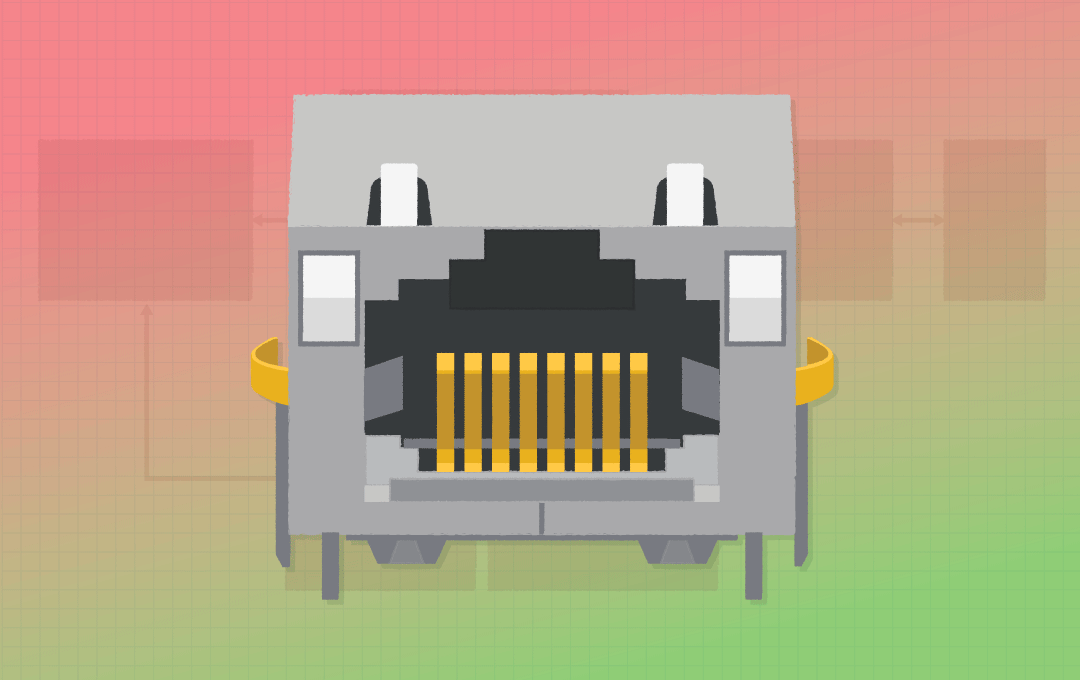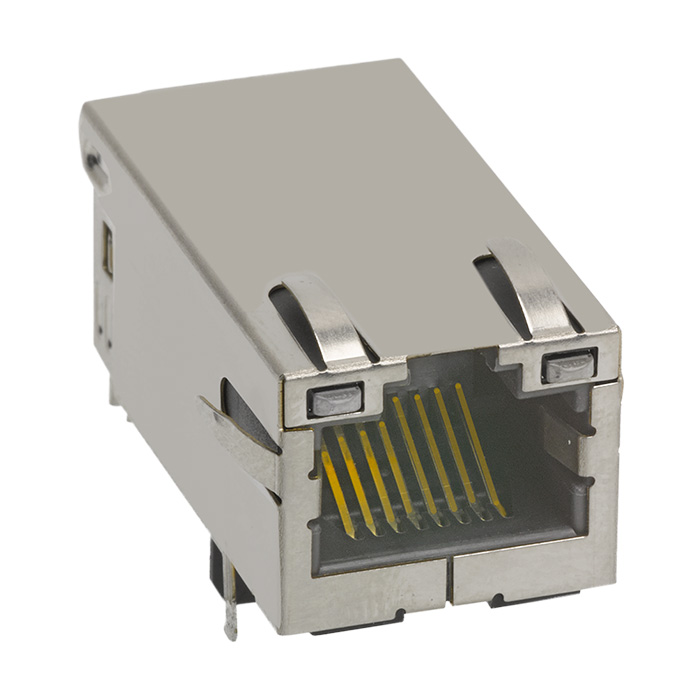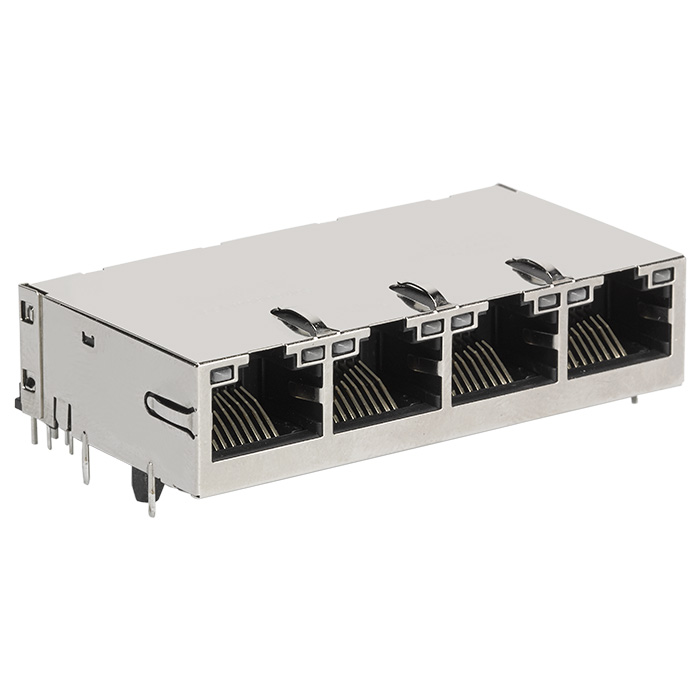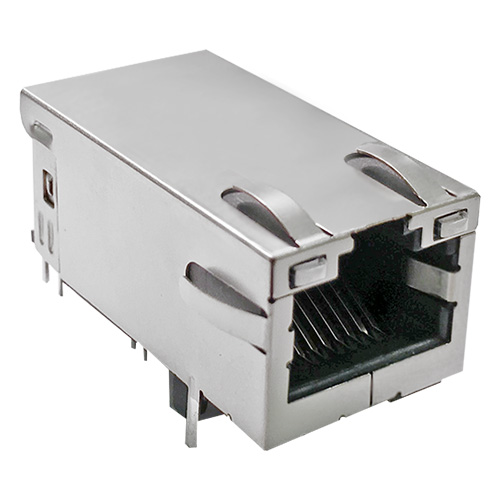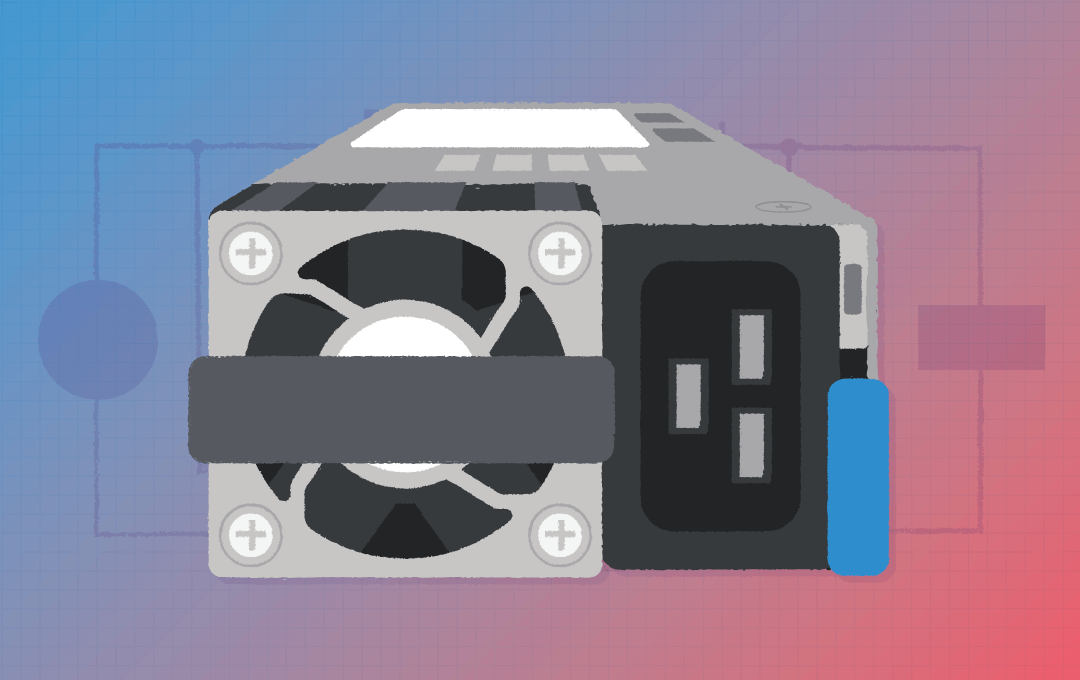Ethernet bandwidth has increased dramatically to support the evolving demands of local area computer networks, but due to the high costs of installed cabling infrastructure, 10GBASE-T technology is currently only affordable for greenfield developments or refurbishments. NBASE-T technology can increase network speeds up to 5Gbps, using existing Cat5e/Cat6 cables.
Introduction of NBASE-T technology
The continued adoption of powerful mobile devices being fed by Cloud-based applications streaming rich content, such as HD video, is putting pressure on existing networks. 1Gbps Ethernet and the associated Cat5e/Cat6 cabling infrastructures are fast becoming a bottleneck in corporate and home networks, which are struggling to keep pace with rising bandwidth demands.
Due to the high “rip and replace” costs of installed Cat5e/Cat6 cabling infrastructure, 10GBASE-T technology is currently only economically viable for greenfield developments or refurbishments. The introduction of NBASE-T technology, which can increase network speeds of existing Cat5e/Cat6 cables to up to 5Gbps at lengths up to 100m, means NBASE-T solutions are being widely deployed to provide content creators, broadband consumers and others a low-cost path to multigigabit speeds.
This article discusses the background to the development of the NBASE-T specification before looking at the important role that magnetics play in LAN system design, and the how choice of Integrated Connector Module (ICM) is key when designing any LAN device.
Ethernet Bandwidth is Increasing to Support Local Network Demands
Since its development in the early 1970's, Ethernet bandwidth has increased dramatically to support the evolving demands of local area computer networks. From the original 10Mbps, Ethernet speeds have moved through a series of progressions, including Fast Ethernet at 100Mbps and Gigabit Ethernet at 1Gbps – or 1000BASE-T. Cabling standards have evolved to support these increasing speeds, evolving from co-axial cables to unshielded twisted pair through to Cat5e and Cat6 cables, which comprise much of the installed cable base in today’s offices and campuses. Modern devices and applications, such as wireless access points and servers, along with the explosive growth of video content and Cloud applications are demanding more bandwidth than the 1Gbps supported by 1000BASE-T.
| Cable Type | Bandwidth | Max Speed at 100m |
|---|---|---|
| Cat 5 | 100MHz | 1Gbps |
| Cat 5e | 100MHz | 2.5Gbps |
| Cat 6 | 250MHz | 5Gbps |
| Cat 6a | 500MHz | 10Gbps |
The 10GBASE-T or 10 Gigabit Ethernet standard was defined in the IEEE 802.3ae-2002 standard to specify the networking technologies required to support transmission of Ethernet frames at rates up to 10Gbps. The roll-out of 10GBASE-T has been more gradual than previous revisions of Ethernet, partially due to the relatively high costs per port of the new technology but mainly due to the fact that Cat5e/6 cable infrastructure can’t fully support the standard. 10GBASE-T requires an upgraded cable standard – Cat6a – meaning that companies would be looking at significant costs to replace existing cable infrastructure.
NBASE-T Alliance Defined Multi-rate Ethernet
To address this issue, a number of industry players, including Cisco, Aquantia, NXP and Intel, formed the NBASE-T alliance in 2014 to introduce specifications for intermediate transmission speeds – 2.5GBASE-T and 5GBASE-T. The NBASE-T specifications were ratified by the IEEE and released in a new standard IEEE 802.3bz. The NBASE-T specification includes a downshifting feature, which allows devices to maximize the link speed in real time by stepping down from the ideal link speed of 10G, to 5G or 2.5G when the noise in the system is too great. N-BASE-T devices can auto-negotiate to find the best speed for the network, either the NBASE-T rates, slower 100Mbps and 1Gbps or even 10Gbps if the infrastructure allows.
NBASE-T also supports Power-over-Ethernet, (PoE), which is fundamental in enterprise deployments, as well as large-building infrastructures, such as airports, shopping malls and stadiums. All PoE standards, are covered and the technology also compensates for the variety of different power spectrums that can be encountered by a device due to varying link speeds within the same cable bundle.
This new standard enables businesses to leverage existing cable investments; Cat5e and Cat6 installations can continue to be used by replacing the devices on either end of the cables with new ones conforming to the IEEE 802.3bz standard.
Magnetics are Required to Address PHY to Cable Interface Requirements
Devices connecting to Ethernet cables within homes, offices and campuses include Ethernet switches, wireless access points, base stations and security cameras. These devices will include a PHY, a component that implements the Ethernet physical layer portion of the various Ethernet standards: 10GBASE-T, NBASE-T, 1000BASE-T, 100BASE-TX, and 10BASE-T. A block diagram of a typical PHY is illustrated in Figure 1, which shows a device based on the DP83822 10/100 Ethernet PHY transceiver chip by Texas Instruments. The majority of the functionality of the PHY device is digital, with the exception of the “magnetics”, an analogue circuit designed to meet the electrical interfacing requirements of the IEEE 802.3 10/100/1000BASE-T specifications. Magnetics address the key electrical interfacing requirements, including electrical isolation, signal balancing, common-mode rejection, impedance matching, and EMC improvement and as such the magnetics circuitry is critical to the operation of the PHY.
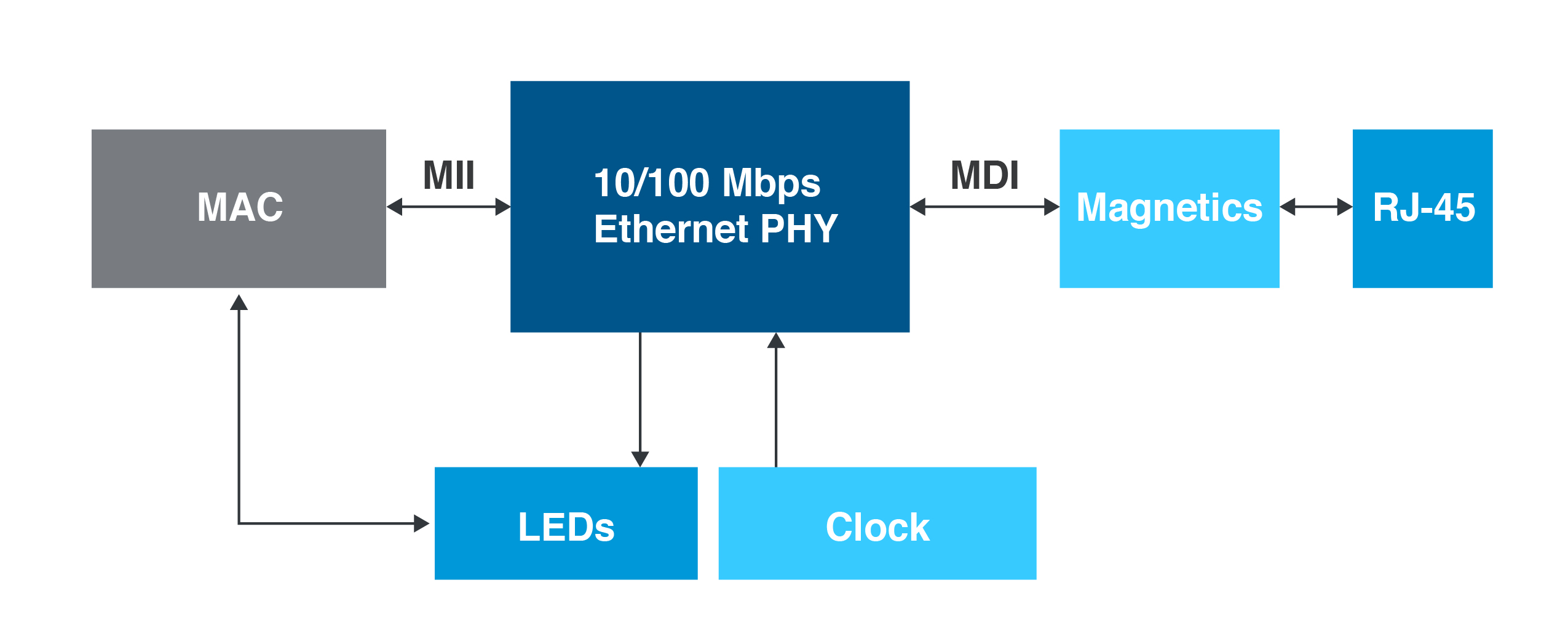
Saving Critical Board Space with Integrated Connector Modules (ICMs)
ICMs incorporate all of the circuitry for the magnetics within the connector thereby saving space on the PHY board and avoiding mixing digital and analogue circuitry on the same chip. Transmission speeds of up to 10Gbps highlight any design flaws or physical imperfections such as board layout issues and differential pair mismatches which may lead to Electro-Magnetic Interference, (EMI) and cause a module to fail Electro-Magnetic Compatibility (EMC) requirements.
In this environment, the ICM is a critical component and choice of the right LAN magnetic component with proper performance and good EMI suppression is key to controlling EMI emission and susceptibility. As speeds increase, LAN magnetics has become increasingly complex, and LAN system designers need to choose the right magnetics from a well-known magnetics manufacturer such as Bel.
As the inventor and largest supplier of Integrated Connector Modules (ICM), Bel has the broadest portfolio of ICM products available. This portfolio includes a recently released range of 2.5GBase-T ICMs, (Figure 2), including the following models:
- 0826-1X1T-HT-F
- 0826-1X4T-HT-F
- 2250331-1
These connectors enable users to implement 2.5GBase-T, nearly doubling their product speed and bandwidth at about the same cost as their current 1GBase-T solution, achieving up to 6.9Gbps speeds.

ICMs Support Power Over Ethernet (PoE)
The Bel Magnetics ICMs also meet the PoE standard for transmitting or receiving 0 to 60 W, as well as all IEEE 802.3 10/100Base-T thru 2.5GBase-T electrical requirements including RL, IL, Common Mode parameters and 100% Hi-pot tested. With an industry standard footprint and pinout, the ICMs are pin-to-pin/footprint compatible with older 1GBase-T products, enabling customers to upgrade existing products without making board layout changes. Typical applications include base stations, security cameras, industrial control equipment, video display units and wireless access points for 802.11ac Wi-Fi. The connectors come in many different LED colour combinations and options, with 30 or 50 micro-inches of gold plated contacts and a number of mechanical options.
Upgrading Existing Cat5e and Cat6 Installations to Take Advantage of NBASE-T
Existing Cat5e and Cat6 cabling installations are being upgraded to take advantage of the higher speeds afforded by the new NBASE-T specifications. End devices such as switches and NAPs are being replaced with NBASE-T equivalents in order to extend the working life of the in-building cabling.
At the faster speeds of NBASE-T, LAN systems are more susceptible to EMI and good design is key to ensuring system performance. LAN magnetics are a critical component when designing out EMI and designers should ensure that they choose a quality ICM from an experienced supplier, such as Bel Magnetic Solutions. A global leader in the design and sales of Integrated Connector Modules (ICM) for Networking and Telecommunications applications, Bel has recently launched a series of connectors which provide an upgrade path to NBASE-T at minimal cost.
With a strong track record of technical innovation, Bel has consistently proven to be a valuable supplier to the foremost companies in its chosen industries by developing cost effective solutions for the challenges of new product development. By combining their strength in product design with their own specially designed manufacturing facilities, Bel has established itself as a formidable competitor on a global basis.

